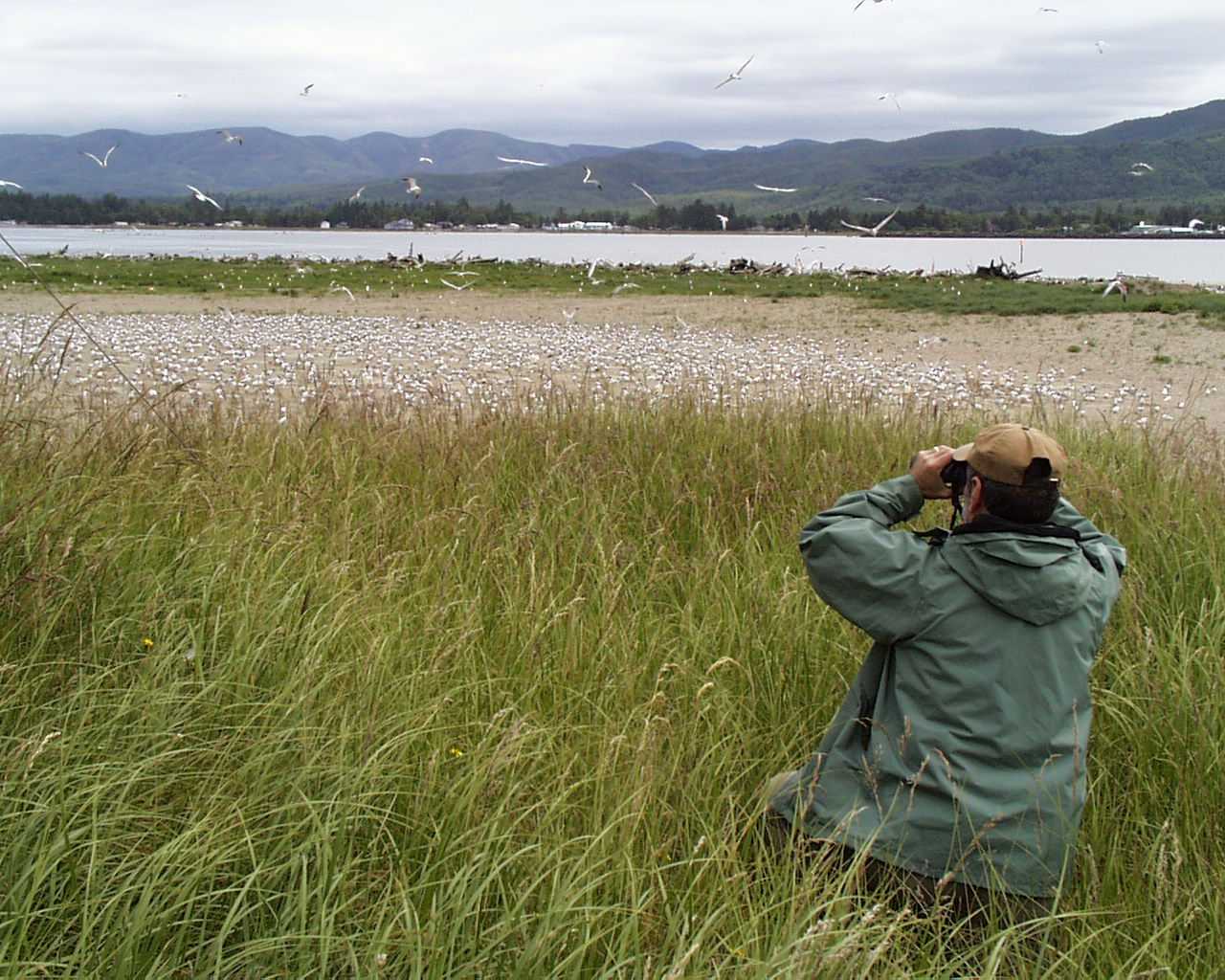Fish-eating birds have an appetite for juvenile salmon and steelhead in the Columbia River, consuming millions every spring and summer as they migrate downstream to the ocean. In 2015, for example, scientists reported to the Council that every year birds consume an estimated 35 percent of the juvenile Upper Columbia River spring Chinook salmon, an endangered species, as they migrate downriver to the Pacific Ocean.
The Council and partners including state and federal agencies and Indian tribes, are working to reduce the threat through efforts that include relocating bird colonies away from the river and hazing birds in their nesting areas. It’s tricky because some of the bird species, Caspian terns, for example, are protected by federal law, as are 13 species of salmon and steelhead. Thus, protected species are killing other protected species, and conservation of all the protected species is critical to their continued existence.
The deterrence efforts in the Columbia River Basin focus on fish-eating birds that nest in colonies in the Columbia Plateau of central Washington and in the estuary near Astoria, Oregon. Native bird species include Caspian terns, double-crested cormorants, American white pelicans, California gulls, and ring-billed gulls. Of these, Caspian terns and double-crested cormorants appear to have the greatest impact. Terns have hit ESA-listed steelhead from the upper Columbia River particularly hard in the plateau region. The primary culprits are Caspian terns that nest on Goose Island in the Potholes Reservoir of central Washington and on Crescent Island in the Columbia downstream of Pasco.
The U.S. Army Corps of Engineers and the U.S. Bureau of Reclamation are working to reduce nesting habitat on the two islands while building new habitat outside the Columbia River Basin in southeastern Oregon and in California. The hope is that the long-migrating birds will nest on the new habitat in the future and find new food sources.
An interagency management plan to reduce predation by Caspian terns has been under way since 2008. As part of the plan, the Corps has reduced the available nesting habitat on East Sand Island in the Columbia River estuary over time. This involves various measures to deter nesting including erecting visual barriers such as fences, stakes, ropes, and flags.
The other major avian predator of juvenile salmon and steelhead is the double-crested cormorant. The nesting colony on East Sand Island numbers about 13,600 breeding pairs, which accounts for at least 40 percent of the breeding population of double-crested cormorants in western North America and is the largest known breeding colony of the species anywhere. In 2015, the Corps of Engineers began culling the East Sand Island population by shooting adult birds and spreading oil on cormorant eggs in their nests. The Corps plans to cull 10,000 birds through 2019.
Predation rates are calculated from PIT (Passive Integrated Transponder) tags that are inserted in juvenile fish upriver then digested by birds that consume the fish. The tags are deposited in bird feces at nesting sites and recorded by researchers using hand-held detectors.
PIT tags recorded on East Sand Island in 2014 indicated that species-specific predation was significantly higher than in 2013 – some of the highest predation rates, in fact, since the East Sand Island colony was first scanned for PIT tags in 1999. This may be the result of there being fewer forage fish in the estuary compared to the number of salmon and steelhead smolts. Ocean conditions have an impact on the abundance of forage fish.
But also, predation rates vary by nesting colony, by salmon and steelhead population, and by year. Bird colonies thus have unequal impacts on smolt survival. Predation on upper Columbia spring Chinook in 2014, for example, was highest at Crescent Island near the confluence of the Snake and Columbia rivers and at East Sand Island in the Columbia River estuary. At several other bird colony sites, predation on that population was significantly lower.
The size of bird colonies and predation rates on juvenile salmon and steelhead are monitored and recorded by Bird Research Northwest, an ongoing, collaborative project among Oregon State University, Real Time Research Inc., and the United States Geological Survey Cooperative Fish and Wildlife Research Unit. A number of partners also support the research project, including the Bonneville Power Administration; Corps of Engineers; Grant County (Washington) Public Utility District; Bureau of Reclamation; U.S. Fish and Wildlife Service; NOAA Fisheries; Northwest Power and Conservation Council; and the Priest Rapids Coordinating Committee.
The Bird Research Northwest website includes data on the size, distribution, status, productivity, diet composition, smolt consumption, and factors limiting the size and productivity of various fish-eating waterbird colonies in Oregon, Washington, and California. See their annual report for 2014.





